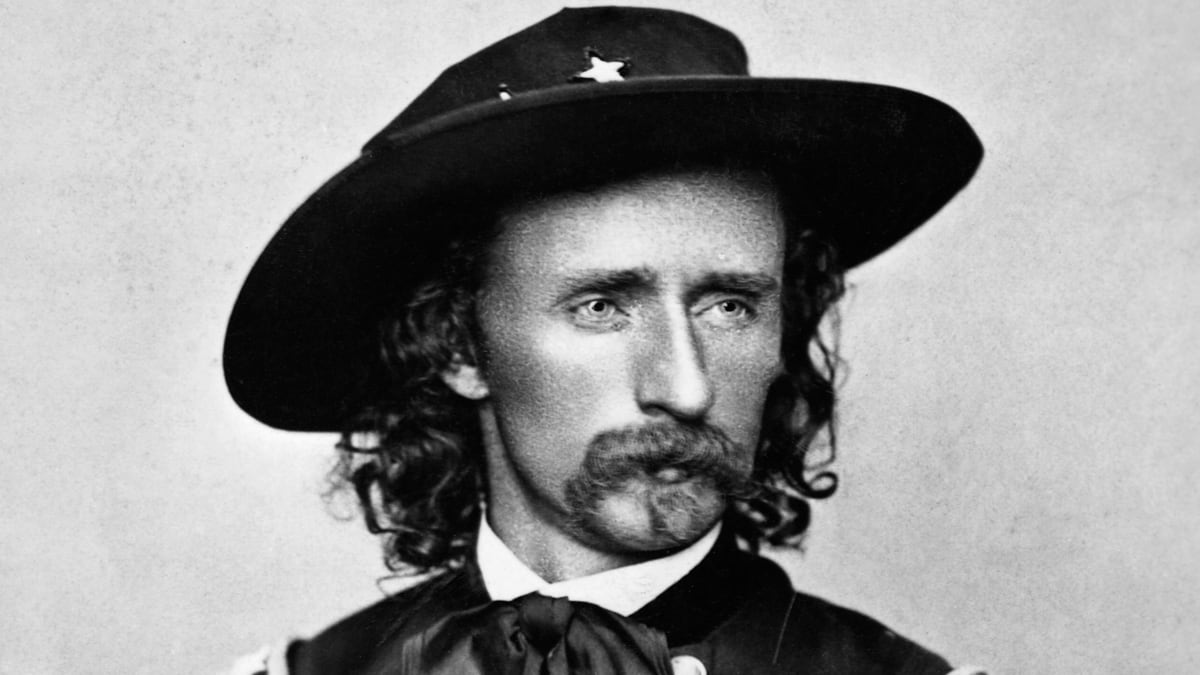The first biography of Gen. George Armstrong Custer appeared in 1876, just months after Custer and 250 of his men died at the battle of Little Bighorn. The author was an English dime novelist named Frederick Whittaker, whose primary virtue, according to Custer’s most recent biographer, novelist Larry McMurtry, “was that he wrote fast.” Soon after Whittaker published his book on Custer, Buffalo Bill Cody added a final scene to his touring Wild West Show called “Custer’s Last Rally.” Several of the performers playing the Indians who fought against Custer were in fact Indians who fought against Custer at Little Bighorn. Custer was played as a cliché of grit and courage, jaw clenched with resolve as he fought to the bitter end. Thanks to Whittaker and Buffalo Bill, Custer’s life became a myth almost as soon as it ended.
Larry McMurtry has been a student of the countless depictions of Custer for the past 40 years. He calls the field “Custerology,” and his collection of Custer-related books, letters, articles, and documents once ran to thousands of items.
For many years, McMurtry saw no need for another book on Custer. He thought that one book in particular, Evan Connell’s Son of the Morning Star, was a masterpiece of scrupulous research unlikely to be surpassed.
ADVERTISEMENT
But one sort of book on Custer was far less common: the short life. “The art of biography has produced all these swollen books,” McMurtry told me. “Six hundred pages on Twain, 800 pages on Roosevelt. It’s more than most people would ever want to know.”
The short life fills a particular niche in the literary ecosystem: to inform a curious reader who wants an introduction to a figure but not an exhaustive study. The form of the short life also attracted McMurtry. Two of his favorite short lives are Henry James on Hawthorne and Rebecca West on St. Augustine. “One reason I prefer the short life to the long life is that in the former plain speaking is usually required,” he writes in the early pages of Custer.

McMurtry is particularly blunt when describing Custer’s flaws. “If Custer signally lacked something it was what the rest of the world called conscience. He had no capacity for empathizing with the pain and suffering of others.” He provides ample evidence to support this harsh verdict. Custer executed Confederate guerillas without trial in the Civil War, massacred without provocation a Cheyenne village at the battle of Washita, and famously disregarded the advice of his scouts at Little Bighorn by dividing his forces and attacking with troops exhausted from a forced march of 83 miles.
McMurtry’s assessment is hardly a minority opinion; much of the vast literature on Custer is critical. But what attracted McMurtry wasn’t Custer, it was the story of the settlement of the American West. In McMurtry’s view, Custer’s defeat at Little Bighorn marks the end of that narrative. “The Indians were pretty unhappy after that victory. They knew punitive expeditions would follow, and they did. They never assembled again in such numbers. It was the end of something, and they were pervaded by a kind of melancholy,” he said.
The book is only 170 pages long, and dozens of period photographs and paintings surround the text. Yet McMurtry writes in a telegraphic style that does in sentences what others do in pages. He describes Custer’s education like this: “West Point itself he seemed to treat as a lively teenager might a summer camp: a good place to have fun.” (Custer finished 34th out of 34 in his graduating class at West Point.)
McMurtry also has an eerie knack for choosing stories that reveal the casual violence present even in the peaceful moments of Custer’s life. When Custer and his wife, Libbie, arrived in the Dakotas in 1873, their marriage was strained by Custer’s philandering. Trying to make amends, “Custer immediately went hunting and killed an antelope whose blood unfortunately dripped on some doughnuts he had been saving for Libbie.” This anecdote is about as close as Custer gets to being likeable. We learn that Custer had an abiding affection for dogs, and that a sizable pack usually traveled with his expeditions. But the evening before ambushing a Cheyenne camp, Custer had all the dogs killed to prevent stray barks from betraying their ambush.
Despite his talent for unearthing suggestive personal details and historical data, McMurtry is skeptical about the possibility of capturing the truth of the old West, either in fiction or in history. “I wanted to de-mythologize the West in Lonesome Dove. And I learned something: it can’t be done.” One instance of the unreliability of sources is a remark attributed to the Crow scout Half Yellow Face, who is reported to have told Custer just before the battle at Little Bighorn, “today we will all go home by a road we do not know.” Yet under closer scrutiny it becomes unclear in what language he made this statement, and even whether he said this at all.
A more readily verified remark comes from the Oglala Sioux warrior Red Cloud, and its blunt melancholy mirrors the tone of McMurtry’s book: “The whites made us many promises, more than I can remember. But they only kept one. They said they would take our land, and they took it.”






